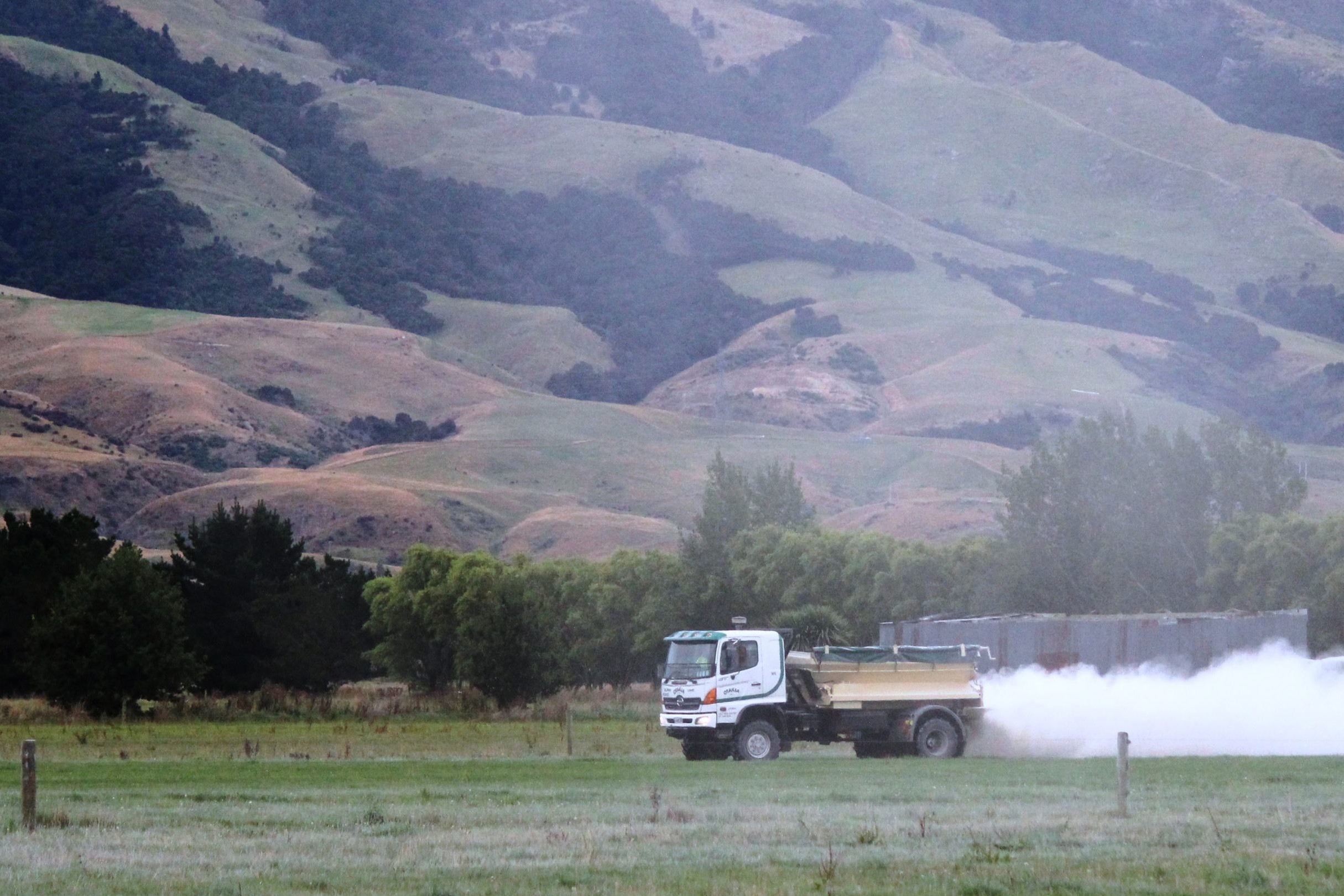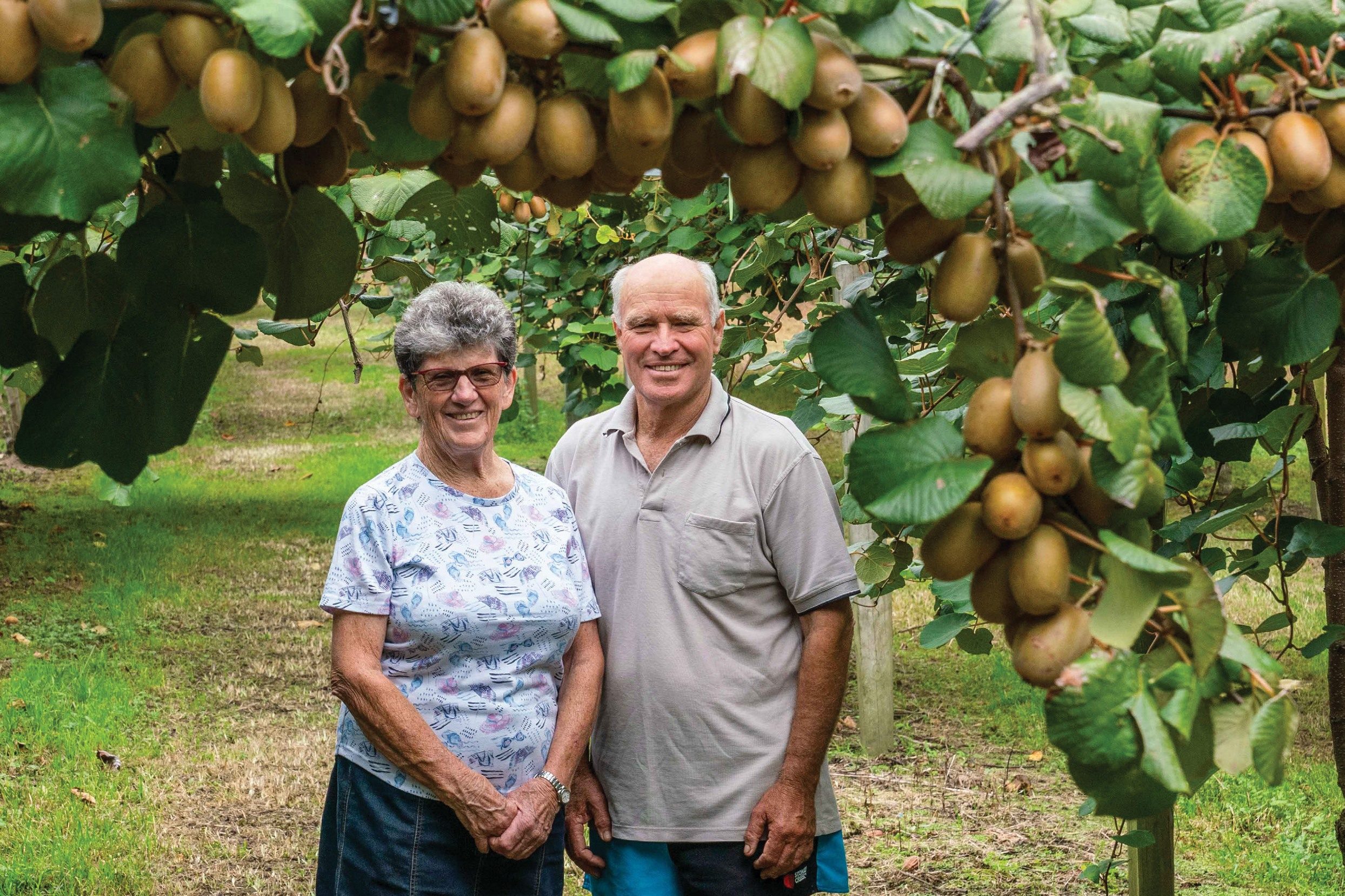Friesian freedom from TAD
Andrew and Phyllis Ford switched their Friesian herd to once-a-day (OAD) milking so they could spend more time with their daughter, Abigail. Despite some challenges, the Ford’s have no regrets. Anne Hardie reports.

Most farmers switch to once-a-day (OAD) milking for lifestyle or practical reasons; Andrew Ford also wanted the challenge of taking their twice-a-day (TAD) Friesian herd through the transition and beyond to see what they could achieve.
Dairy farmers who headed to Nelson for the OAD Conference in May visited Andrew and Phyllis Fords’ dairy farm on the outskirts of Richmond where the Ford family has been milking cows for 55 years. The herd is one of just three remaining on the Waimea Plains and until eight years ago, milked 365 days of the year to supply town milk.
Andrew returned to the farm in his early 20s and later bought the farm from his parents. He acknowledges he’s probably the last generation to farm the highly-prized horticulture land with its hefty irrigation costs.
The Waimea Community Dam being built in yonder hills will supply crucial water to the plains, but it’s costing the Fords just over $5000/ha to buy shares for 63ha and then an annual charge of $1000/ha. The costs have continued to rise as the dam progresses and Andrew says it’s probably getting to the stage where it is uneconomical to milk cows on the plains.
The farm covers 72ha with 10ha of that is designated for the young stock, while a couple of nearby lease blocks grow supplements adding up to 400t of silage and 500 medium bales of hay this past season, graze R2s through winter and half the herd.
Going way back, the family milked Jersey cows, but the herd struggled to keep up with winter milking and they moved toward Friesian. Today, the cows average 550kg liveweight including the two-year-olds and are showing the benefits of OAD milking.
“You really don’t have to fatten the cows in winter,” Andrew says, with cows half a condition score more than they were on TAD.
When they decided to switch the herd to OAD four years ago, they were milking about 200 cows at 500kg milksolids (MS) per cow, with their last season on TAD producing 99,000kg MS. This past season they milked 195 cows at 439kg MS/cow for a total of 86,000kg MS.
MASTITIS WAS A CHALLENGE
“I certainly wouldn’t say we’ve mastered (OAD) or are highly successful and there’s been lots of challenges along the way.”
Mastitis was one of the challenges, though funnily enough it wasn’t a problem the first season they switched from TAD. That first season the herd rose just slightly from its last TAD season average of 133,000 cells/ml to 154,000 cells/ml, though Andrew says there was still mastitis popping up. The second season it rose higher to 202,000 and then 237,000 in the third year before dropping to 168,000 this past season. This last season they used Mastatest to find out exactly what the bugs are and get a more targeted antibiotic to treat mastitis cases. This coming spring they plan to test more cows again. They’ve culled plenty of cows with a history of mastitis and Andrew says OAD milking has highlighted problems that went under the radar on TAD.
At the OAD field day, it was pointed out that mastitis grows mastitis and cows with mastitis spread it through the milking plant. One of the advantages of OAD is that the cows are only going into the dairy once and that literally halves the opportunities for mastitis to spread. One farmer said he gave a $20 note to any staff that picked up mastitis as incentive to look for problems.
Views differed on whether to use dry cow therapy and teat seal to lower the risk of mastitis, though it was also pointed out that the writing was on the wall to have less reliance on antibiotics. It was suggested that teat seal may produce some wastage, but cows self corrected.
LESSONS LEARNT
In hindsight, Andrew says they probably didn’t do their homework well enough for the transition from TAD to OAD and though mastitis didn’t show up in the somatic cell count straight away, it was there. Fluctuations in the milk vacuum didn’t help and three years ago they replaced it with a second-hand milking plant for their 15-aside herringbone dairy. It raised discussion at the field day, with the advice to farmers contemplating switching from TAD to OAD to ensure the milk line in their system could handle the massive amount of milk produced at a OAD milking.
Andrew says they also had a few too many cows that first year at 220 and other farmers at the field day agreed it was best to stick to the same numbers when transitioning from TAD to OAD. Another piece of advice was to keep plenty of replacements available in case they were needed.
As well as carrying more cows, the weather wasn’t playing ball that first season. It barely stopped raining through spring before drying out in summer. The herd started out alright, producing 1.8kg MS/cow/day, but by October production was down to 1.5kg MS/cow/day. The cows were being given palm kernel but weren’t lapping it up as they should, until molasses was added to increase their intake.
They completed the season at 390kg MS/cow and a total of 85,000kg MS compared with about 500kg MS/cow on TAD and the previous season of 99,000kg MS. That equated to a 22% drop in production per cow and 14% in total production.
Less bought-in feed is put into the system on OAD and includes some of the silage from lease blocks, plus palm kernel which added up to 70t this past season. In the past they fed the cows apple pomace from March through to September, but the local juice factory closed last year and so they filled the autumn gap with silage this year after they stopped feeding palm kernel in March.
Waimea Plains has fertile soils and the Fords have no trouble growing 17t of drymatter (DM) a year. It’s a good climate and through winter they can still grow 20kgs DM/ha/day which is why they retain half the herd on the milking platform, with the other half on a nearby lease block. Irrigation is essential in summer and the entire farm is watered by either pivot, rotorainer or K-line, with restrictions brought in most years as the region dries out.
CALF REARING DONE DIFFERENTLY
Climate and soils enable them to calve July 23 onto paddocks still growing grass, but when it comes to calves, Andrew rears them a little differently to most farmers. They usually rear about 55 replacements and the calves are kept in the six-bay shed for eight weeks before they get out on grass. About 75% of the milk in that time is stored colostrum, with the later calves getting more whole milk from the vat.
At two weeks they are getting milk just once a day to get them eating pellets – which is cheaper than milk. They are given hay as well and then at eight weeks they are let out in the paddock with a mild sedative. The latter is to protect the calves from themselves because the excitement of being let out in the big wide world can be quite chaotic.
Having raised calves inside and outside, Andrew reckons they do better when they are reared inside. Part of that he attributes to keeping them off pasture and intestinal worms, which is why they don’t need a drench at weaning. The calves then rotate around the paddocks at the back of the farm, interspersed with occasional grazing paddocks the cows graze to help keep worm burdens low. In fact, Andrew doesn’t remember the last time he bought drench.
The calves are the result of LIC’s A2 Friesian team which are a mixture of genomic and daughter-proven bulls. The Fords have chosen A2 simply to keep their options open.
Before OAD milking, they selected bulls with good udder scores and Andrew says that probably helped the switch from TAD to OAD for the Friesian cows. The cows are big producers and in early January averaged 540kg MS per cow, with some producing more than 600kg MS.
Although the Friesian herd has performed well on OAD, the Fords have opted to use crossbred genetics over the yearlings for the past two years. It’s aimed at increasing the BW of the herd. In the past, the herd had a reasonably high BW, but when the system was reranked, the herd’s BW dropped and now sits at 105. Using crossbred bulls will help lift the herd’s BW and he thinks the resulting crossbred cows will probably suit their system better now.
The downside is they will have bobby calves again or will have to find an outlet for the crossbred calves. The Friesian bull calves regularly go to a local farmer at market rate and last year they were worth $100. Going ahead they are using sexed semen to get their replacements, with the tail end of the cycling cows put to beef bulls.
Reproduction has been a bit of a battle, even on OAD. Back in the days when they milked through winter their empty rate was as high as the mid 20s and this year it has ended up at 14% despite the cows being in top condition throughout.
They usually have a nine-week mating, but this year they went 10 weeks, with a short-gestation bull at the end. A third of the empties this year were previous carryover cows which have now had a second chance and will be out of the herd. Andrew says the carryover cowshave provided options on the farm and always milk better than the two-year-olds coming into the herd. But they have decided they won’t keep carryover cows in the future to try and improve reproduction in the herd.
PROFITABLE MOVE
All considered, the decision to move to OAD has been a good one for the Fords. For the 2019-20 season, the farm had an operating profit margin of 29.6% and that worked out as an operating profit of $2,865 (EFS)/ha and $2.35 (EFS)/kg MS. Their FWE for that season was $4.48/kg MS which compared with the DairyBase benchmark for the top of the South Island of $4.77/kg MS. DairyBase has 42 farms in that group.
“We want to be profitable, but profit isn’t the only driver. You want life to be enjoyable. Not having to milk cows in the afternoon is great.”
Theoretically it provides more family time and getting away from the farm with nine-year-old Abigail, though Andrew jokes they still haven’t mastered the lifestyle aspect yet and wonders how they managed when they milked the cows twice a day. They have one full-time staff member on the property, Warren Thomas, who has been with them for 20 years now.
He was originally taken on to pull out an orchard at the rear of the farm and stayed. Seventy-seven-year-old Peter Crichton has been on the payroll even longer. He joined 30 years ago as a relief milker and still heads to the farm every second week to milk the cows.





